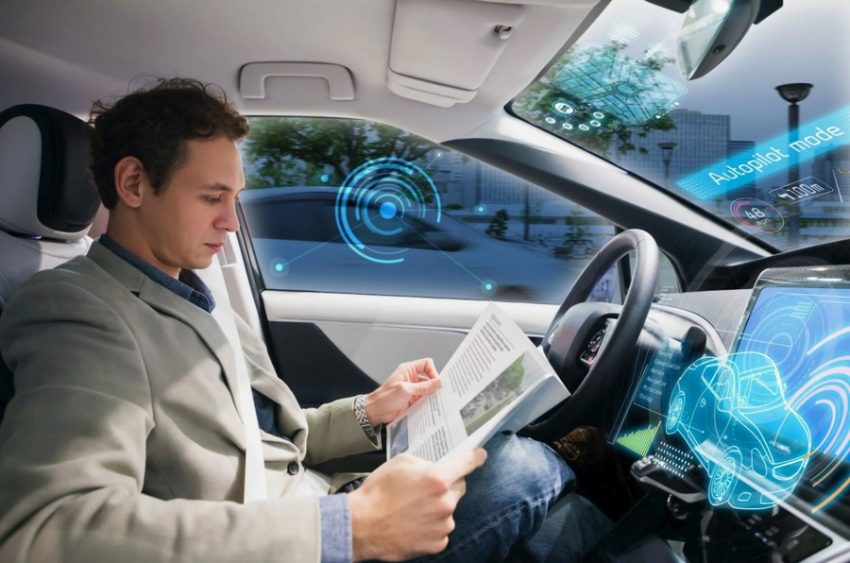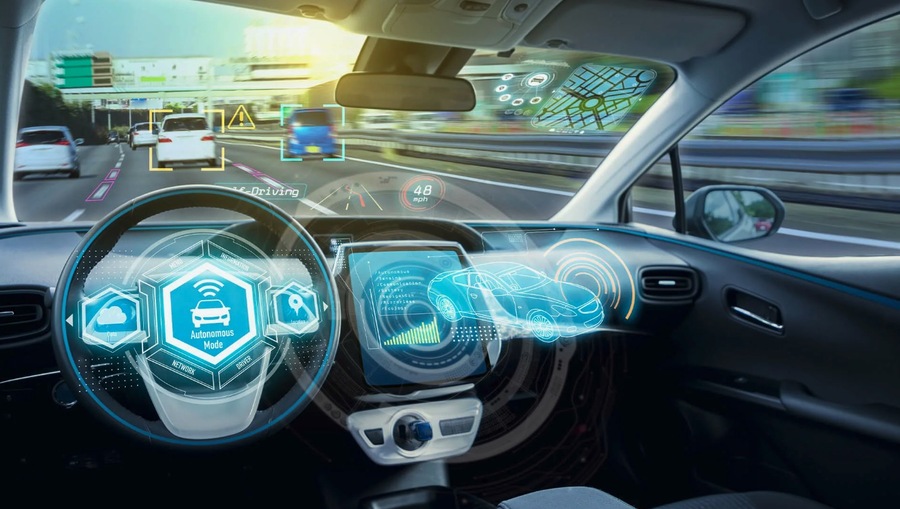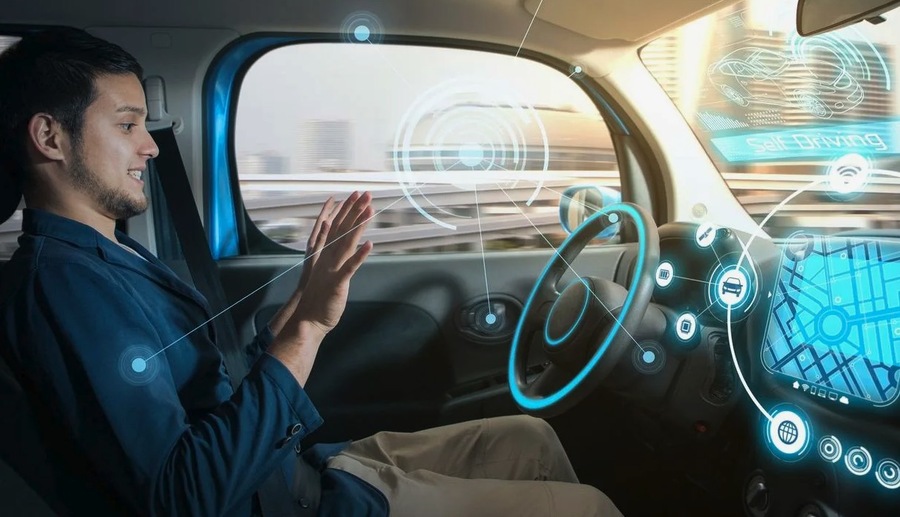The Rise of Autonomous Rental Vehicles: Current Trends and Future Expectations

Science fiction is giving way to real-world autonomous vehicle technology, which has the potential to transform several sectors, including car rentals, completely. Advances in sensor technology, artificial intelligence, and machine learning are making autonomous vehicles (AVs) more practical for daily usage. This article examines the latest advancements in autonomous vehicle technology, their possible effects on the automobile rental market, and the present and anticipated future advances influencing this rapidly evolving field. Over the past ten years, there has been a notable acceleration in the development of autonomous cars due to huge technological developments and funding from the automotive and technology industries. Several major trends are now shaping the AV technology market:
1. Advancements in Sensor Technology
Sensors play a major role in autonomous cars’ ability to navigate and comprehend their surroundings. LiDAR (Light Detection and Ranging), radar, cameras, and ultrasonic sensors are some of these sensors. AVs are now safer and more effective thanks to recent advancements in sensor technology, which have also improved these systems’ accuracy and dependability. For instance, LiDAR systems now offer high-resolution 3D mapping capabilities while being more portable and reasonably priced.
2. Enhanced Machine Learning Algorithms
The massive volumes of data produced by AV sensors require the use of machine learning methods. These algorithms allow the car to recognize impediments, anticipate pedestrian behavior, and select the best routes in real time. Deep learning and neural network developments have greatly enhanced AVs’ capacity to learn from and adjust to various driving scenarios.
3. Integration of AI and IoT
The development of autonomous cars has been accelerated by the combination of artificial intelligence (AI) and the Internet of Things (IoT). Vehicles can interact with infrastructure and each other thanks to IoT connection, while artificial intelligence (AI) enables AVs to understand data from many sources. This link makes it easier to regulate traffic, eases congestion, and raises general safety.
4. Increased Investment and Partnerships
Large automakers, IT behemoths, and venture investors have invested significantly in the autonomous car space. Businesses like Tesla, Waymo, and Cruise are leading the push, but conventional manufacturers like Ford and General Motors are also making significant investments in AV technology. The implementation of autonomous cars is advancing due to partnerships between technology and automotive businesses.
Several experimental programs and on-road testing projects are in progress, showcasing the useful uses of self-driving car technology and its possible influence on the automobile rental sector.

Waymo One
In Phoenix, Arizona, Waymo, a division of Alphabet Inc., has introduced Waymo One, a for-profit autonomous ride-hailing service. This service uses self-driving minivans with sophisticated sensors and artificial intelligence (AI) technologies. Through a smartphone app, customers may schedule rides and enjoy the security and convenience of driverless transportation. Waymo’s comprehensive testing and data collection has yielded important insights into the prospects and operational constraints associated with autonomous vehicles.
Cruise Origin
With support from General Motors and Honda, Cruise has created the Cruise Origin, an autonomous car specifically intended for shared transportation. The Origin offers a distinctive passenger experience with its roomy, cabin-like interior devoid of conventional controls. Cruise intends to use the Origin to provide a practical and environmentally responsible mode of city transportation. San Francisco will host the first pilot programs, hoping to expand to other cities.
Tesla’s Full Self-Driving (FSD) Beta
A restricted group of customers may test Tesla’s most recent autonomous driving software by enrolling in the Full Self-Driving (FSD) Beta program. The FSD system, which uses Tesla’s vast fleet data and artificial intelligence capabilities, makes autonomous lane changes, parking, and city street navigation functions possible. Tesla is leading the AV industry even though the technology is still in its early stages of development because of its iterative approach to software upgrades and real-world testing.
Regulatory Updates and Challenges
Significant regulatory obstacles stand in the way of the widespread use of autonomous cars as governments and regulatory agencies strive to create frameworks that guarantee public safety and foster innovation.
Federal and State Regulations
Both the federal and state governments in the US are actively creating laws for self-driving cars. The National Highway Traffic Safety Administration (NHTSA) has released standards for AV testing and implementation with a focus on safety and openness. Meanwhile, states like Arizona and California have passed laws permitting the testing of autonomous vehicles on public thoroughfares. These regulations aim to strike a compromise between the need to promote technical innovation and safety concerns.
International Perspectives
Regarding autonomous car legislation, nations like Singapore, Japan, and Germany set the global standard. Germany has enacted laws permitting high automation, or Level 4, autonomous cars on specific roadways, while Japan is getting ready to roll out self-driving taxis for the 2025 World Expo. The extensive legal environment in Singapore encourages AV testing and pilot projects, emphasizing AV integration with the public transit network.
Ethical and Liability Considerations
The use of driverless cars brings up issues related to responsibility and ethics. For example, assigning blame in the case of an AV-related accident might be difficult. Regulatory frameworks must address these challenges to provide manufacturers, operators, and insurers with clear standards. Additionally, to increase public confidence in AV technology, ethical issues must be thoroughly investigated, including making decisions in dire circumstances.
Impact on the Car Rental Industry
The emergence of autonomous cars poses noteworthy prospects and obstacles for the automobile rental sector. As AV technology develops, car rental firms may use it to improve services and streamline operations.
1. Enhanced Customer Experience
With autonomous cars, customers may enjoy a smooth and practical rental car experience. By utilizing a smartphone app, renters may call AVs, eliminating the requirement for actual rental sites and cutting down on wait periods. Additionally, AVs can offer individualized in-car experiences, such as tailored entertainment selections and route recommendations, depending on the user’s preferences.
2. Operational Efficiency
Autonomous cars can save operating costs and improve fleet management for automobile rental firms. Autonomously moving to places with high demand is possible for AVs, eliminating manual repositioning. AVs can also plan maintenance and do self-diagnostic tests, which increases vehicle availability and decreases downtime.
3. New Business Models
The use of AVs opens up new economic opportunities in the automobile rental sector. Businesses may meet both short—and long-term rental demands by providing flexible, on-demand leasing services. In which owners rent out their autonomous vehicles (AVs) while not in use, peer-to-peer car sharing can also be made easier by autonomous cars, opening up new revenue sources.
4. Safety and Liability
While autonomous vehicles (AVs) offer increased safety by reducing human error, automobile rental firms must negotiate the complicated world of liability and insurance. Strong insurance frameworks and well-defined regulatory rules are important to mitigate possible risks and guarantee client protection.

Future Expectations
A number of trends and expectations are expected to shape the business’s trajectory, which bodes well for the future of autonomous rental cars.
1. Increased Adoption
The use of AV technology in the vehicle rental sector is anticipated to increase as it becomes more dependable and reasonably priced. Early adopters of AVs will have a competitive advantage, drawing in tech-savvy clients and strengthening their standing in the market.
2. Urban Mobility Solutions
Solutions for urban mobility will heavily rely on autonomous rental cars. AVs can enhance public transit networks by offering connections for both the first and last miles. This integration will lessen congestion, reduce pollutants, and result in more sustainable urban settings.
3. Collaboration and Partnerships
Collaboration between automakers, technology firms, and car rental companies will be key to the successful rollout of driverless rental cars. Collaborations will speed up the development and commercialization of AVs by facilitating the sharing knowledge, resources, and data.
4. Continuous Innovation
The autonomous car sector is known for its quick innovation. AI, sensor technology, and networking will continue to progress, improving the capabilities and security of autonomous vehicles. To be competitive, car rental firms need to keep up with these advancements and make research and development investments.
Conclusion
The emergence of driverless rental cars represents a paradigm change in the automobile rental sector. Recent advancements in AV technology, pilot initiatives, and regulatory revisions highlight how AVs may boost customer satisfaction, increase operational effectiveness, and open up new business prospects. The future of urban mobility and the automobile rental sector will be shaped by the growing use of autonomous rental cars as technology advances and legal frameworks change.
To capitalize on this trend, car rental firms must embrace innovation, cultivate partnerships, and efficiently manage the regulatory landscape. By doing this, companies can lead this exciting shift and provide their clients with cutting-edge solutions that adapt to their changing demands. Autonomous vehicles are the way of the future, and the rental car sector is well-positioned to spearhead this transformation.


